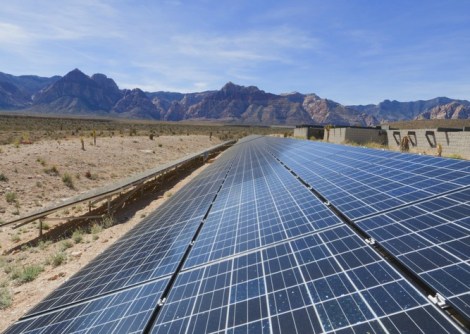Lauren Sommer at KQED reports on the state of solar power in the U.S.:
Talk to anyone in the solar industry and they’ll tell you: it’s the best of times, it’s the worst of times. Solar installations are booming, but there’s also a looming trade war with China.
Let’s look the booming: Employment in the U.S. solar industry is up more than 13 percent over last year, as we reported last week. And Danny Kennedy, president of Sungevity, makes the point that the solar industry is a much more robust job generator than its fossil-fueled competitors: “The coal industry has been around for over a century and provides more than a third of our power supply but employs just some 1.5 times as many people as solar companies. The solar industry currently provides about 0.5% of our power supply and already employs 119,000 Americans.”
Over the coming year, growth in the U.S. solar sector is expected to continue, though not as rapidly. As Shayle Kann, vice president for research at GTM Research, told KQED, “We’re looking at what we expect to be about 71 percent growth in solar installations in 2012 over 2011. So that’s a strong growth rate, but it is slower than we’ve seen. In 2010 and 2011, the market more than doubled. So it’s slowing down a bit, but solar is still growing fast throughout the US.”
Solar production is also up in Germany, by about 50 percent over last year. But the U.S. and Germany seem to be bucking worldwide trends. Says Kann:
Globally, it’s a tough year in solar. We have massive oversupply of solar panels, so it’s been a really hard time for solar manufacturers. And demand on a global level is growing, but relatively slowly this year as compared to the past couple of years, where we’ve seen really massive growth. The big reason for that is that Europe has slowed down as incentives have been pulled back from European governments.
And that brings us to the looming trade war.
Just today, China lodged a complaint with the World Trade Organization over the European Union subsidizing its homegrown solar industry — normally a violation of WTO rules against subsidies that support local production to the detriment of trade. This follows close on the heels of the U.S. government imposing tariffs on Chinese-made solar components.
More from Sommer:
All of this adds up to some major growing pains for the industry. “It is totally a teenager in a lot of ways,” says Dan Kammen, a professor at UC Berkeley.
“The industry is growing dramatically. There’s also incredible turmoil. And there are some teenagers who are clearly going to be young prodigies and others who are going to go into rehab,” says Kammen.
When companies fight over market share and race to the lowest price, Kammen says it’s the startups with cutting-edge technology that just can’t compete.
“A battle between the two biggest players, the US and China, is one where we might actually have casualties that aren’t just business casualties, they’re actually, pieces of innovation getting lost.”
Speaking of innovation, Stanford scientists have just built the first solar cell made entirely of carbon — which is pretty awesome, but less awesome when the market is already saturated with panels.




